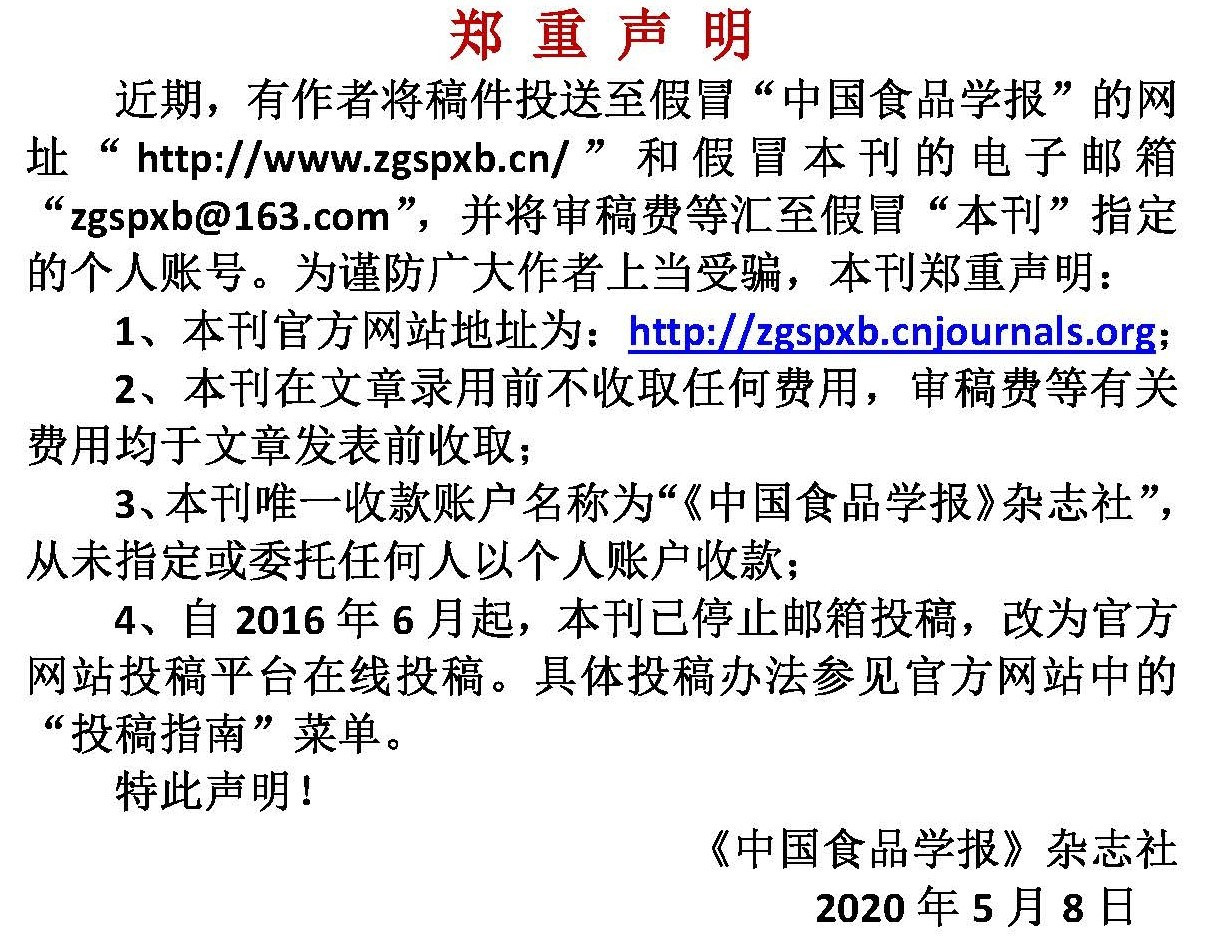酿酒酵母和异常汉逊酵母混合发酵黄酒工艺研究
作者:
作者单位:
(1.浙江工商大学食品与生物工程学院 杭州 310018;2.浙江树人学院生物与环境工程学院 浙江省污染暴露与健康干预重点实验室 杭州 310015)
作者简介:
通讯作者:
中图分类号:
基金项目:
浙江省绍兴黄酒产业创新综合体科技创新项目
Studies on Yellow Rice Wine Technology Using Mixed Fermentation of Saccharomyces cerevisiae and Hansenula anomala
Author:
Affiliation:
(1.School of Food and Bioengineering, Zhejiang Gongshang University, Hangzhou 310018;2.Key Laboratory of Pollution Exposure and Health Intervention of Zhejiang Province, College of Biology and Environmental Engineering, Zhejiang Shuren University, Hangzhou 310015)
Fund Project:
引用本文
郑超群,陈晨,蒋予箭,张蕾,谢广发.酿酒酵母和异常汉逊酵母混合发酵黄酒工艺研究[J].中国食品学报,2024,24(1):146-159
复制分享
文章指标
- 点击次数:
- 下载次数:
- HTML阅读次数:
历史
- 收稿日期:2023-01-29
- 最后修改日期:
- 录用日期:
- 在线发布日期: 2024-02-19
- 出版日期:
版权所有 :《中国食品学报》杂志社 京ICP备09084417号-4
地址 :北京市海淀区阜成路北三街8号9层 邮政编码 :100048
电话 :010-65223596 65265375 电子邮箱 :chinaspxb@vip.163.com
技术支持:北京勤云科技发展有限公司
地址 :北京市海淀区阜成路北三街8号9层 邮政编码 :100048
电话 :010-65223596 65265375 电子邮箱 :chinaspxb@vip.163.com
技术支持:北京勤云科技发展有限公司
